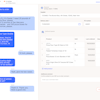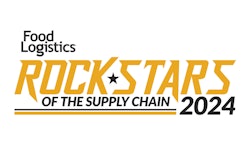
Let’s face it, the world has changed. Business has changed. And it’s going to keep changing. Competition is increasing, and customers are changing their habits and demands. The companies that succeed will be the ones that embrace the change, invest in cutting-edge ways of thinking and doing business, and in some cases, take the necessary risks to get the job done.
Here are some important trends to consider going into 2024:
· Technology is not the bottleneck; it is already here. If you invest in new enterprise software (and you should), it must be modern, evergreen, secure and scalable to support business agility. But remember, the technology is not the starting point. The business is driving change, not the technology. The business will need to be the starting point. Ask the question: “Where can we make the most material impact for the business by solving real business challenges via technology?”
· Success in 2024 is all about data and how it can be leveraged to improve the bottom line. Food and beverage organizations need a modern technology foundation that helps make the business agile and efficient, within manufacturing and in new product development and introduction. Find a platform that gives you the ability to process and profit from your data. All of the data. With the right platform, businesses can use artificial intelligence (AI) and machine learning (ML) to cut costs and drive efficiency. Every business is seeking visibility into operations and financial performance in addition to detailed insights into product margins. You cannot improve what you cannot see.
· Consumer demand for traceability, and transparency will continue to expand further up and down the supply chain. This demand will continue to improve food safety while keeping consumers better informed about what they are eating, how it’s produced and where it’s coming from.
· The worker shortage will continue. The pandemic accelerated this shortage, and it’s clear the trend will continue. The workforce, as it was, is not returning. At least not any time soon. So, companies will continue the move to automation, within manufacturing and packaging, not only on the shop floor. Automation also optimizes administrative processes, e.g., by use of AI to provide business process intelligence to achieve hyper-automation. Process intelligence can help companies monitor whether their administrative processes are executed consistently and help determine which processes require human interaction. AI can then suggest business process adjustments and automation, for instance, applying robotic process automation (RPA).
· The focus on sustainability will continue to be driven by increased consumer consciousness, certifications, and new regulations and reporting. Companies with a strong sustainability profile could also benefit financially by avoiding additional taxation. This will make them more attractive to investors looking for organizations that are green and set up for success in the future. In addition, climate change will impact crops and supply. For examples: 20% lower harvests of grains in Scandinavia because of the drought in May and June. El Nino impacts cacao and other crops harvests. Olive harvest in Spain impacted by drought.
Looking into 2024, change is inevitable for the food and beverage industry. Businesses must be more agile, as challenges related to labor, climate change and supply chain disruption will impact operations and ultimately the bottom line. Success in the industry will depend on how quickly companies can adapt to shifting consumer demands while utilizing the latest technology to remain competitive.

















